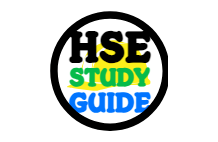
5 Safety Interview Mistakes to Avoid (From Real Hiring Managers)
Introduction
Landing a job in the safety industry requires more than just the right qualifications—it also demands a strong interview performance. Hiring managers often see candidates make the same mistakes, which can cost them the job. To help you stand out, we’ve gathered insights from real hiring managers on the top safety interview mistakes to avoid.
1. Not Knowing OSHA Standards (or Relevant Regulations)
Safety roles require a deep understanding of regulations like OSHA (Occupational Safety and Health Administration) standards. A common mistake is giving vague answers or not being able to discuss key regulations. Hiring managers want candidates who can apply these standards in real-world scenarios.
✅ How to Avoid It: Review OSHA guidelines (or other relevant regulations) and be prepared to discuss how you’ve implemented them in past roles.
2. Failing to Provide Specific Examples
General statements like “I prioritize safety” won’t impress interviewers. They want concrete examples of how you’ve identified hazards, conducted safety audits, or led training sessions.
✅ How to Avoid It: Use the STAR method (Situation, Task, Action, Result) to structure your answers with real-life examples.
3. Overlooking Soft Skills
Safety professionals need strong communication, problem-solving, and leadership skills. Some candidates focus too much on technical knowledge and forget to highlight their ability to train employees, resolve conflicts, or foster a safety culture.
✅ How to Avoid It: Prepare stories that demonstrate your soft skills, such as how you handled a safety violation or convinced management to invest in better PPE.
4. Not Asking Insightful Questions
When the interviewer asks, “Do you have any questions for us?” and you say “No,” it suggests a lack of engagement. Asking thoughtful questions shows you’re serious about the role and the company’s safety culture.
✅ How to Avoid It: Ask questions like:
- “How does the company measure safety performance?”
- “What are the biggest safety challenges currently facing the team?”
5. Showing Overconfidence or Under-Preparation
Some candidates assume their experience speaks for itself and don’t prepare thoroughly. Others are overly confident and dismissive of safety protocols. Both approaches raise red flags for hiring managers.
✅ How to Avoid It: Research the company’s safety policies, recent incidents (if public), and industry trends. Be confident but humble—show you’re always learning.
5 Safety Interview Mistakes to Avoid (From Real Hiring Managers)
1. Not Knowing OSHA Standards (or Relevant Regulations)
❌ Bad Example:
Interviewer: “How would you handle a situation where workers aren’t wearing fall protection on a construction site?”
Candidate: “Uh, I’d remind them it’s important… OSHA says they should, right?”
✅ Strong Example:
“Under OSHA 1926.501, fall protection is required at 6 feet or higher in construction. I’d first stop work, then conduct a safety briefing reinforcing the rule. If it continues, I’d implement retraining and document violations per company policy.”
2. Failing to Provide Specific Examples
❌ Bad Example:
Interviewer: “Tell me about a time you improved workplace safety.”
Candidate: “Yeah, I always make sure people follow the rules.”
✅ Strong Example (Using STAR Method):
“At my last job (Situation), we had recurring slip hazards in the warehouse (Task). I led a safety audit (Action), installed anti-slip mats, and trained staff on spill reporting. Within 3 months, slip incidents dropped by 60% (Result).”
3. Overlooking Soft Skills
❌ Bad Example:
Interviewer: “How would you handle a worker who refuses to wear PPE?”
Candidate: “I’d write them up. Safety is non-negotiable.”
✅ Strong Example:
“First, I’d ask why they’re resistant—maybe the gear is uncomfortable. I’d explain the risks (using real injury stats) and offer alternatives like better-fitting PPE. If they still refuse, then enforcement steps would follow.”
4. Not Asking Insightful Questions
❌ Bad Example:
Interviewer: “Do you have any questions for us?”
Candidate: “Nope, I’m good.”
✅ Strong Example:
“How does leadership here support safety initiatives? For example, if I proposed a new near-miss reporting system, what would the approval process look like?”
5. Showing Overconfidence or Under-Preparation
❌ Bad Example:
Interviewer: “What’s your approach to conducting a risk assessment?”
Candidate: “I’ve done tons of these—it’s basic stuff. You just walk around and look for hazards.”
✅ Strong Example:
“I follow a structured process: First, I review past incident reports, then conduct a walkthrough with a checklist (like OSHA’s). I involve employees since they know the risks best, and prioritize fixes based on severity and likelihood.”
Conclusion
Avoiding these five mistakes can significantly improve your chances of landing a safety role. Hiring managers look for candidates who combine regulatory knowledge, practical experience, and strong interpersonal skills. Prepare thoroughly, use real examples, and engage with the interviewer to leave a lasting impression.
5 HAZOP Interview Questions for Process Safety Engineers
10 Lockout/Tagout – LOTO Interview Questions & Answers
10 One Minute Safety Interview Questions (Quick Answers)
10 Risk Assessment Interview Questions (+ Matrix Examples)
5 Safety Scenario Questions & How to Answer Them
FAQs
What’s the most common mistake safety candidates make?
Not providing specific examples of how they’ve improved workplace safety. Hiring managers want to see proof of your impact.
How important are certifications in a safety interview?
Very important! Certifications like OSHA 30, CSP, or NEBOSH validate your expertise. However, you must also demonstrate practical application.
Should I discuss past safety failures in an interview?
Yes, but frame them as learning experiences. Explain what went wrong, how you fixed it, and how it improved safety moving forward.
How can I show I’m a good fit for the company’s safety culture?
Research the company’s safety values and mention how your approach aligns with them. Ask questions about their safety initiatives.
What’s the best way to prepare for a safety interview?
- Study relevant regulations (OSHA, ANSI, etc.).
- Prepare 3-5 strong safety-related examples.
- Practice answering behavioral questions using the STAR method.
























